In this article, You will read Dryland Agriculture & Rainfed agriculture – for UPSC IAS.
Introduction to Rainfed agriculture
- In agriculture, we can find different types of crops depending on the availability of water.
- Rainfed agriculture refers to the area under various types of crops where the cultivation is dependent upon the monsoon rainfall.
- Rain-dependent areas can be broadly split into two: ‘dry lands’, which receive less than 750 mm of rain a year; and rainfed areas, which receive more than 750 mm.
- Rainfed agriculture is practiced under a wide variety of soil type, agro-climatic and rainfall conditions ranging from 400 mm to 1600 mm per annum.
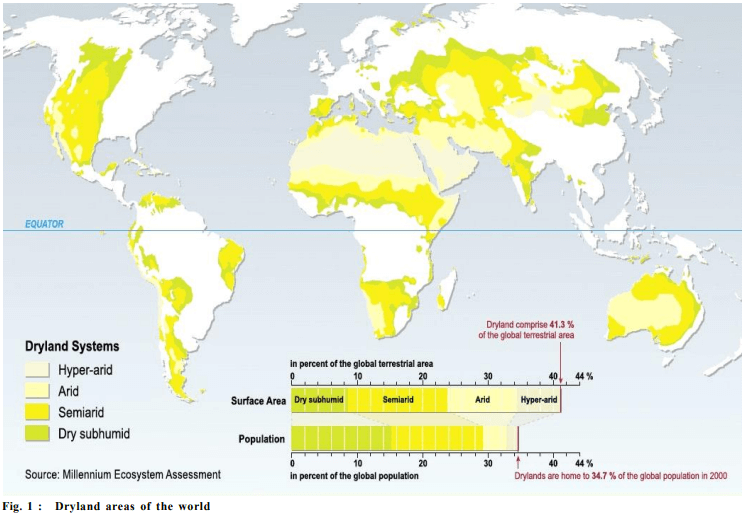
Difference between Rainfed and Dryland agriculture
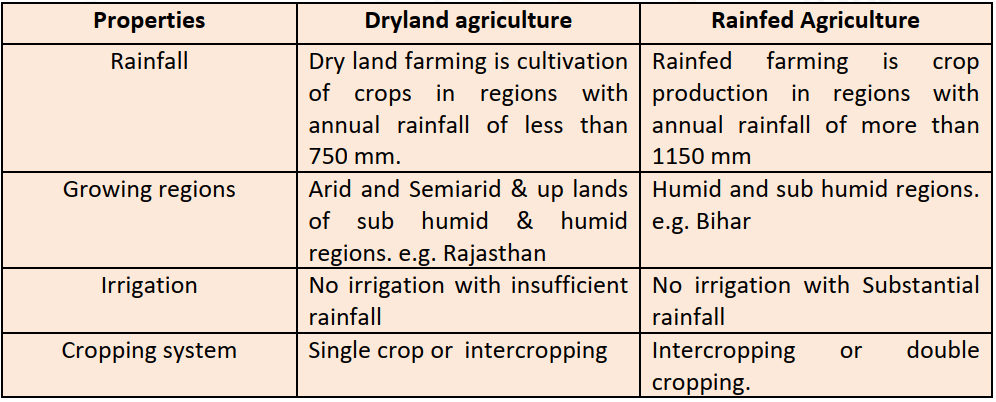
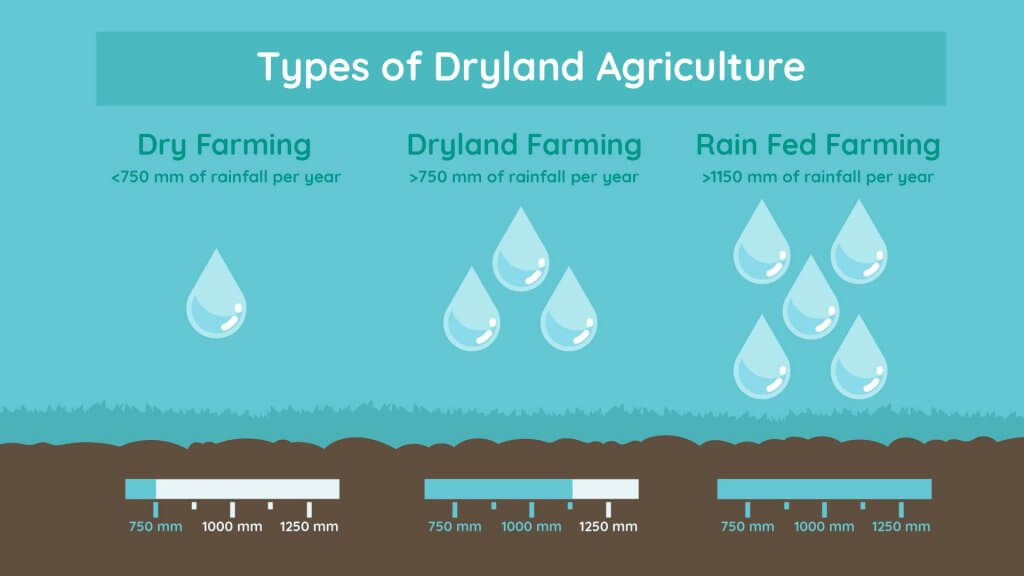
Dryland Agriculture in India:
- India has 143 million ha of its geographical area under cropping, out of which 113 m ha has the potential to be irrigated, thus, 30 m ha are rainfed agriculture, even if the full potential of irrigation has been utilised.
- Presently, India has 93 m ha (recent data = 100 m ha) under irrigation. Thus, 43 m ha are under rainfed conditions.
- Dryland agriculture refers to the region or the type of farming which is operated in sub humid to arid conditions with inefficient hydrology, lack of irrigation facilities, complete dependency on monsoon rainfall and reflecting a typical cropping pattern of coarse grains millets and oilseeds, pulses, cotton etc.
- All dryland agriculture qualify to be called as rainfed but it is not so vice – versa, as the fundamental difference is the agro – ecological properties and the cropping pattern between the two.
Need for Dryland Agriculture in India
- India has 1/3rd of its geographical area is under humid conditions, while 2/3rd is subhumid or arid conditions. Thus, dryland agriculture occupies larger land than the wet agriculture.
- It supports 40% of the population and occupies 66% of land. The ratio needs to be rectified, by increasing the productivity of these region
- For the balanced development of country, dryland agriculture must be emphasized.
- Dryland agriculture is based on the industrial crops e.g. cotton, groundnut, oilseeds, pulses, tobacco. For development of agro processing industries and to make Indianagriculture more export- oriented greater emphasis on dryland agriculture is inevitable.
- Agriculture has forwarded and backward linkages with industry and thus, if industrial crops are produced in greater quantum, meso-scale, household, cottage industries could be developed in rural areas and rural dev processes can be propelled. It will also result in industrialisation and bring about economic growth in the country.
- Dryland agriculture mostly produces hardy and nutritious crops eg. Jowar, bajra, ragi, pulses, oilseeds, cottonseeds, sunflower, safflower. Thus, the nutrition / malnutrition problems in poor areas can be fought with the help of dryland agriculture.
- Dryland agriculture involves cash cropping, E.g. Jatropha cultivation can reduce the magnitude of petroleum crisis since liquid produced by it can be added to petroleum products without reducing the efficiency.
- Dryland agriculture has the potential to produce fodder and cattle feed. Thus, it can help in white revolution. Also, here the pasture lands are more extensive and cattle breeds have greater per-capital yield.
- Sheep-raising has greater prospect in semi-arid areas.
Characteristic Regions of Dryland Agriculture

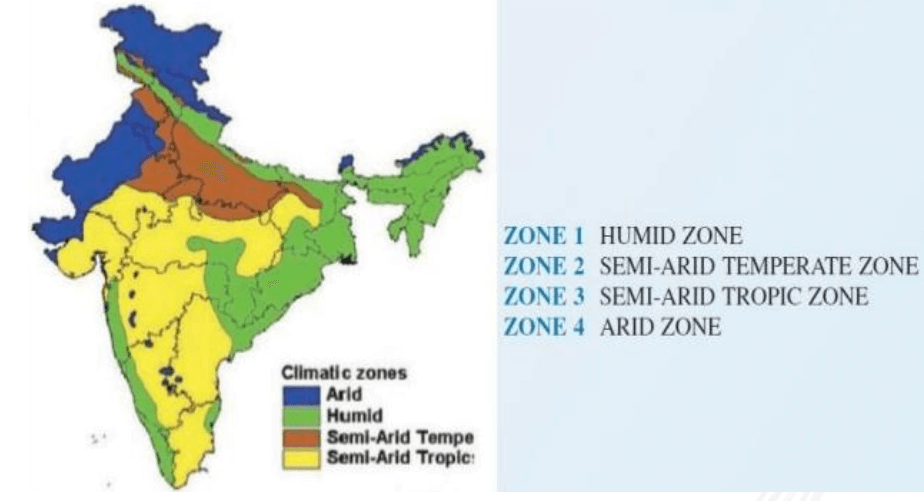
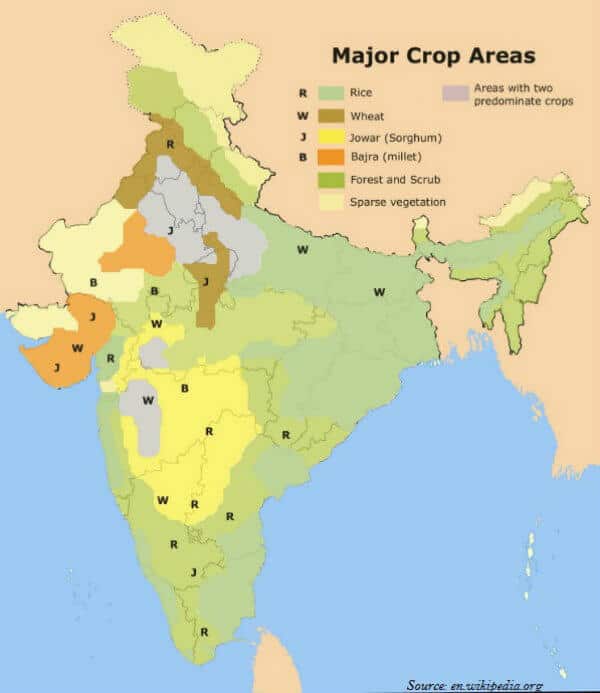
Solution to Improve Efficiency and Productivity of Dryland Agriculture
- Dryland areas have a significant contribution in pulses, oilseeds, coarse grain crops, and cotton. Optimal use of dryland technologies for increased agricultural production can help to fill the demand-supply gap in pulses and oilseeds production and improve the economic status of farmers. The various methods to improve the efficiency and productivity of dryland agriculture are summed below:
- Water-harvesting: It means capturing rain where it falls or capturing the runoff in your own village or town. And taking measures to keep that water clean by not allowing polluting activities to take place in the catchment. Water harvesting can be undertaken through a variety of ways.
- Capturing runoff from rooftops
- Capturing runoff from local catchments
- Capturing seasonal floodwaters from local streams
- Conserving water through watershed management
- Agronomical practices on scientific basis e.g. Crop rotation, intercropping etc
- Soil preparation: No soil is ideal hence it necessitates the preparation of soil before and after the cultivation. Soil fertility may be lost due to continuous farming; for the replenishment of soil contents, it is prepared prior to sowing of seeds. In agriculture, ploughing, levelling, and manuring are the three steps of soil preparation.
- Organic farming: Organic farming is a system that avoids or excludes use of synthetic inputs like pesticides, fertilizers, hormones, etc. and relying on techniques like crop rotation, organic wastes, farm manure, rock additives and crop residues for plant protection and nutrient utilization.
- Watershed management: Watershed management implies effective conservation of soil and water resources for sustainable production with minimum non-point resources (NFS) pollutant losses. It involves the management of land surface and vegetation so as to conserve the soil and water for immediate and long-term benefits to the farmers, community, and society as a whole. The various measures adopted under soil and water harvesting is:
- Vegetative barriers
- Building of contour bunds along contours for erosion
- Furrow/Ridges and Furrow ridge method of cultivation across the slope.
- Irrigation water management through drip and sprinkler methods.
- Planting of horticultural contour species on bunds.
- Ecological conservation techniques in farming: Ecological farming includes all methods, including organic, which regenerate ecosystem services like: prevention of soil erosion, water infiltration and retention, carbon sequestration in the form of humus, and increased biodiversity. Many techniques are used including no-till, multispecies cover crops, strip cropping, terrace cultivation, shelterbelts, pasture cropping, etc.
- Use of HYV varieties of crops (drought resistance crops).
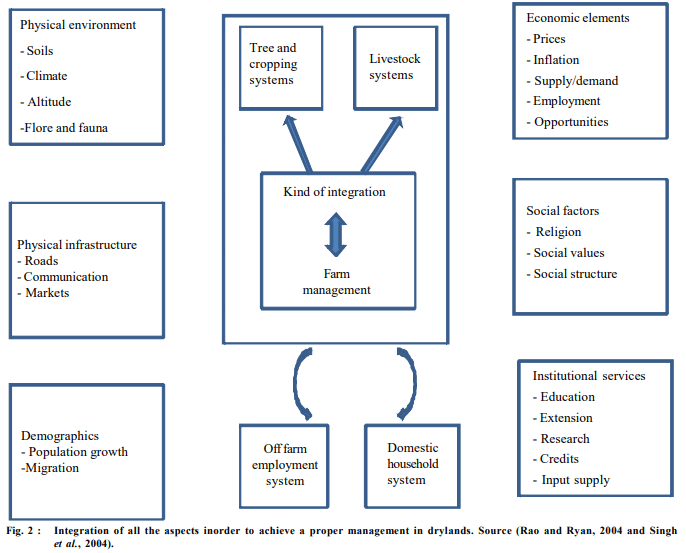

good
Government step to improve dry farming
Excellent illustration…
Excellent
Good